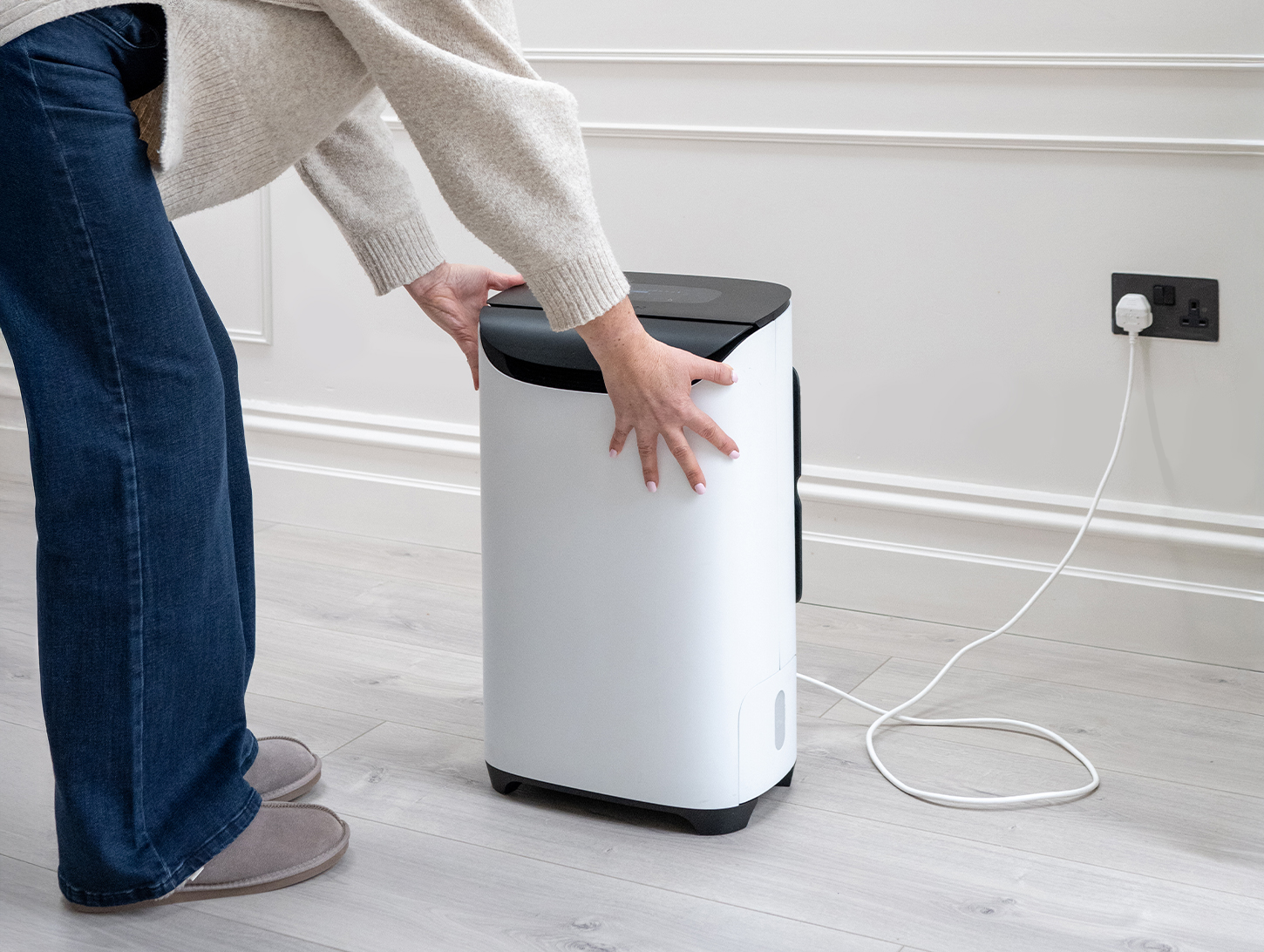The reason why this question comes up is because compressor dehumidifiers extract less water as the temperature and/or relative falls and costs more money per litre of water as the conditions fall.
Desiccant dehumidifiers on the other hand are pretty much consistent and their performance does not change much as temperature falls or rises.
It used to be the standard fall back (probably started by myself to be honest) that a good rule of thumb was to recommend compressor dehumidifiers above 16°C and desiccant dehumidifiers below this point. This was a good guide but advancements in design have clouded this advice.
Compressor or desiccant dehumidifiers?
The dehumidifiers that are creating confusion here are two from the Meaco Platinum Range, the Meaco 20L Low Energy Dehumidifier and the Meaco 25L Low Energy Dehumidryer. Both compressor dehumidifiers extract more water at 15°C than a desiccant dehumidifiers and using around a third of the energy.
At 10°C the Meaco 20L Low Energy extracts between 1.8 and 5.12 litres of water per day which is slightly less than a desiccant but only a little bit less and yet it extracts this water for less than 200 watts.
The 25L model extracts slightly more water using similar energy levels and therefore confuses the agreement further.
Below 10°C below things are more straightforward and the case for desiccant is stronger.
What do you need?
If your application is in the home then the low noise level of the desiccant dehumidifier or the extra heat that they produce might be seen as a positive and might move you towards buying a desiccant. Most cold applications though are outside the home (in a garage, on a boat or in a caravan for example) and in which case all of our desiccants and both of the above models come with auto-restart in case of a power cut.
So when you are looking for a low temperature dehumidifier consider these two compressor models as well and then look at the bigger picture in terms of the extra feature all of the contending models have to offer, for example;

The Meaco DD8L Desiccant dehumidifier is very popular for use in a garage where the temperature will drop over winter.
- The sterlising ioniser on Zambezi or Zambezi’s Daily Run Timer.
- The optional HEPA filters on the 12L and 20L Low Energy dehumidifiers.
- The Laundry drying capabilities of the Dehumidryer.
- The lightweight of the DD8L and DD8L Junior.
- Are you likely to use it in a warmer space in the future?
If you are unsure then the other option is to just call us for a chat on 01483 234900.
Products featured: Meaco DD8L, Meaco DD8L Junior,







32 responses
I have a MEACODRY ABC Dehumidifier that I only use in my conservatory.
After reading about a desiccant Dehumidifier, I think my best option is to get one bearing in mind that it heats up the room also, whereas my first one mentioned does not.
Therefore, is a desiccant one more expensive to run?
Joyce,
Thank you for your enquiry. Yes, a desiccant DD8L dehumidifier is more expensive to run compared to a compressor-based model like the ABC.
The desiccant models work by using a special material to absorb moisture, which requires more energy to generate heat and dry the air, thus consuming more electricity.
In terms of running costs, the DD8L (desiccant) typically uses around 8p / hour based on 24.50p / kWh on fan speed 1 and 16p / hour based on 24.50p / kWh on fan speed 2 and laundry mode. A 12L ABC costs 4p / hour based on 24.50p / kWh.
I hope that helps.
Omar@Meaco.
Do I have to run 24/7 or can I turn off dd8l at nights only run during the day
Hello,
Thank you for your enquiry as below.
Could you please advise:
– Primary reason for using the unit?
– Where are you using the unit?
As a general principle leaving the unit switched on means you allow the unit to decide, how? It has a humidity sensor, similar to that on our radiators (thermostats) the unit will detect when humidity has increased and turn on or remain off if no changes.
I hope this helps.
Kind regards,
Omar
Please advise on the best model for two second floor bedrooms with dormer windows of a house we let to students. They are centrally heated but have a lot of condensation on windows in winter, leading to mould. Tenants will have to carry the vessel down to the first floor to empty it as there is no plumbing up there and the machine needs to be as quiet as possible. Thanks
i would guess that they are drying laundry in the space, this will be contributing to the volume. Go for the Arete 12L, it is very quiet and can be used to dry the washing.
Going round in circles trying to decide which model I need. Three bed bungalow with one of the bedrooms upstairs. Large living room and large kitchen-diner (latter open to hallway and stairs which are also open to the upstairs bedroom). We turn down heating in downstairs bedrooms when they’re not in use. House can get a bit cold
I am not too bothered about noise or air filters but would prioritise low energy usage. Also, availability as many models are out of stock. What should I be looking for and any tips where to find one?
Fiona,
Loads of stock will be available from the 6th December. If there are two of you in the house then go for a 12L model, if there are more of you then go 20L.
Chris
Are you still in business? I can’t find an Arete for sale anywhere.
Pete,
Very much so. The dehumidifiers have proved to be a massive success and as soon as stock arrives it sells out the same day. Stock has gone to John Lewis, Currys, Argos, Big On Electricals and appliances Direct this week and more will go in each week between now and Christmas.
I appreciate this is beyond your control, but do you have an idea as to when stock is actually made available for ordering at these retailers each week, as currently everywhere is still showing out of stock on the larger capacity units. Thanks.
We are posting regular updates on social media because demand is so high at the moment. Here is a link to our Facebook page – https://www.facebook.com/MeacoUK